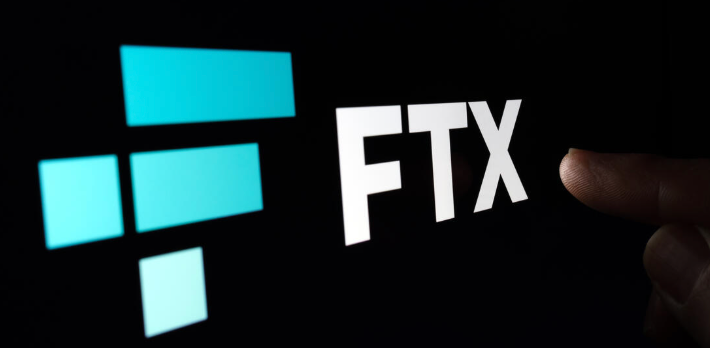
The Rise, Fall, and Aftermath of a Crypto Empire
Introduction: A Cautionary Tale in the Cryptocurrency World
The cryptocurrency industry has witnessed numerous dramatic events throughout its relatively short history, but few have captured public attention and shaken market confidence quite like the spectacular collapse of FTX and the subsequent downfall of its founder, Sam Bankman-Fried (often referred to as SBF). What began as one of the most promising success stories in the crypto space—a meteoric rise of both a platform and its charismatic young founder—ultimately unraveled into one of the industry’s most significant fraud cases. This article examines the complete arc of the FTX saga: from its ambitious beginnings and rapid ascent to its catastrophic collapse in November 2022, the legal proceedings that followed, and the lasting impact on the cryptocurrency ecosystem and its participants.
The Rise: Building a Crypto Empire
Sam Bankman-Fried, a former Wall Street trader and MIT physics graduate, founded FTX in 2019 after previously establishing the quantitative trading firm Alameda Research in 2017. With his distinctive appearance—characterized by unruly hair and casual attire—and his apparent commitment to effective altruism (a philosophical movement focused on using evidence and reasoning to determine how to benefit others as much as possible), SBF quickly became one of the most recognizable figures in the cryptocurrency world.
FTX grew at a remarkable pace, positioning itself as a sophisticated exchange platform catering to both retail and institutional traders. The exchange offered a wide range of cryptocurrency derivatives, options, volatility products, and leveraged tokens. Its user-friendly interface, innovative products, and aggressive marketing strategy helped it rapidly gain market share in an increasingly competitive landscape.
By 2021 and early 2022, FTX had secured its position as one of the world’s largest cryptocurrency exchanges. The company raised billions in venture capital funding, with its valuation soaring to an estimated $32 billion in January 2022. SBF himself was estimated to be worth approximately $26 billion at his peak, making him one of the richest people under 30 in the world.
FTX’s growth strategy included high-profile sponsorships and partnerships that significantly boosted its visibility. The company secured naming rights for the Miami Heat’s arena (temporarily renamed FTX Arena), signed deals with major sports figures like Tom Brady and Stephen Curry, and sponsored numerous esports teams and events. These marketing efforts, coupled with SBF’s increasing presence in mainstream media and his political donations, cemented FTX’s position as a major player in the crypto industry and helped legitimize it in the eyes of the public.
SBF also cultivated an image as a different kind of billionaire—one who lived modestly despite his wealth, slept on a beanbag in his office, and pledged to donate most of his fortune to effective altruist causes. This persona, combined with his articulate explanations of complex crypto concepts, earned him the nickname “the JPMorgan of crypto” and positioned him as a responsible voice in an often-chaotic industry.
The Collapse: A House of Cards Falls
The first significant cracks in the FTX empire appeared in early November 2022. On November 2, crypto news outlet CoinDesk published an article revealing that Alameda Research, SBF’s trading firm, held a surprisingly large position in FTT, the token issued by FTX. This raised serious concerns about the relationship between the supposedly independent entities and the overall financial health of both companies.
The situation deteriorated rapidly when Binance, a rival exchange led by Changpeng Zhao (CZ), announced on November 6 that it would liquidate its substantial FTT holdings due to “recent revelations.” This announcement triggered a bank run as FTX customers rushed to withdraw their funds from the platform. Within days, FTX faced a liquidity crisis as it struggled to meet withdrawal demands.
In a dramatic turn of events, Binance briefly announced a non-binding agreement to acquire FTX on November 8, only to back out of the deal a day later, citing issues “beyond our control or ability to help.” By November 11, 2022, FTX, Alameda Research, and approximately 130 affiliated companies filed for Chapter 11 bankruptcy protection. SBF resigned as CEO and was replaced by John J. Ray III, an attorney with experience in managing major corporate failures, including Enron.
As investigations began, the true extent of the mismanagement and alleged fraud at FTX came to light. John Ray III stated in a court filing that he had never seen “such a complete failure of corporate controls and such a complete absence of trustworthy financial information” in his career. The bankruptcy proceedings revealed that customer funds had been misappropriated, with billions of dollars unaccounted for.
The Allegations and Legal Proceedings: Justice Unfolds
In December 2022, Sam Bankman-Fried was arrested in the Bahamas at the request of U.S. authorities. He was subsequently extradited to the United States to face criminal charges. The indictment against him included counts of wire fraud, securities fraud, money laundering, and conspiracy to defraud the United States and violate campaign finance laws.
The core allegations against SBF included:
- Misappropriating FTX customer funds to support Alameda Research’s trading operations
- Using customer funds for luxury real estate purchases in the Bahamas
- Making risky investments with customer assets without their knowledge or consent
- Providing false or misleading information to investors and lenders
- Making illegal political donations through straw donors to circumvent campaign finance laws
Several other FTX and Alameda executives, including Caroline Ellison (former CEO of Alameda Research and SBF’s former romantic partner), Gary Wang (FTX co-founder), and Nishad Singh (former FTX engineering director), pleaded guilty to various charges and agreed to cooperate with prosecutors.
SBF’s trial began in October 2023. After a month-long proceeding, he was found guilty on all seven counts of fraud and conspiracy. On March 28, 2024, he was sentenced to 25 years in prison and ordered to forfeit $11 billion. The sentence, while substantial, was less than the 40-50 years prosecutors had sought but significantly more than the 6.5 years requested by SBF’s defense team.
Throughout the legal proceedings, SBF maintained that he had not intentionally defrauded customers and that the collapse was primarily the result of risk management failures rather than deliberate misconduct. Even after his sentencing, he continued to assert that if he had remained CEO, FTX could have overcome its financial troubles and reimbursed customers sooner—claims that have been met with skepticism by many observers and the crypto community.
The Aftermath: Ripple Effects Across the Crypto Ecosystem
The collapse of FTX and the fraud perpetrated by Sam Bankman-Fried had far-reaching consequences for the cryptocurrency industry and its participants:
Impact on Customers and Investors: Millions of FTX users lost access to their funds, with total customer losses estimated at around $8 billion. The bankruptcy proceedings have been working to recover and return assets to creditors, but the process is complex and ongoing. Some Reddit discussions have highlighted the devastating personal impact, with claims of individuals taking their own lives due to financial losses.
Market Contagion: The FTX collapse triggered a broader crypto market downturn and raised concerns about other exchanges and platforms. Several crypto companies with exposure to FTX, including BlockFi and Genesis, subsequently filed for bankruptcy themselves, creating a contagion effect throughout the industry.
Regulatory Scrutiny: The FTX debacle intensified calls for stricter regulation of cryptocurrency exchanges and platforms. Regulatory agencies worldwide, particularly in the United States, accelerated efforts to establish clearer frameworks for crypto oversight. The Securities and Exchange Commission (SEC) and the Commodity Futures Trading Commission (CFTC) have become more aggressive in their enforcement actions against crypto companies.
Trust and Reputation: The scandal severely damaged trust in the cryptocurrency industry, particularly among mainstream investors and institutions. Exchanges and platforms have had to work harder to demonstrate their financial stability and the security of customer funds, with many implementing proof-of-reserves systems to provide greater transparency.
Effective Altruism Movement: The scandal also had repercussions for the effective altruism movement, with which SBF had closely associated himself. His actions raised questions about the movement’s values and the potential risks of concentrating philanthropic power in the hands of wealthy individuals with questionable ethics.
Ongoing Legal and Recovery Efforts: As of early 2025, legal proceedings related to FTX continue, with efforts to recover assets for creditors still underway. In March 2025, reports indicated that SBF had been transferred out of a New York detention center, likely as part of the process of serving his 25-year sentence. Meanwhile, there have been unverified rumors about potential presidential pardon considerations, though these appear to be speculative.
Lessons and Reflections: What the FTX Saga Teaches Us
The FTX collapse offers several important lessons for the cryptocurrency industry and its participants:
The Importance of Transparency and Governance: The lack of proper corporate controls, independent board oversight, and transparent financial reporting at FTX allowed problems to fester undetected. The case highlights the critical importance of robust governance structures, even in innovative and fast-moving industries.
The Dangers of Centralization: The FTX debacle underscores one of the central ironies of the cryptocurrency space: while blockchain technology was designed to enable decentralized, trustless systems, much of the industry’s activity has become concentrated in centralized exchanges and platforms that require users to trust third parties with their assets.
The Role of Due Diligence: Many sophisticated investors and venture capital firms invested in FTX without conducting thorough due diligence. The case serves as a reminder of the importance of rigorous investigation before committing funds, regardless of the hype surrounding a company or its founder.
The Limits of Charismatic Leadership: SBF’s carefully cultivated image as a brilliant, altruistic wunderkind helped shield him from scrutiny. His case illustrates how charismatic leadership can sometimes mask serious underlying problems and the importance of looking beyond personal narratives.
The Need for Clear Regulation: The regulatory gray area in which many crypto companies operate contributed to the conditions that made the FTX fraud possible. Clearer regulatory frameworks, while potentially constraining innovation in some ways, might help prevent similar situations in the future.
Conclusion: A Watershed Moment for Cryptocurrency
The rise and fall of FTX and Sam Bankman-Fried represents a watershed moment in the history of cryptocurrency. What began as one of the industry’s greatest success stories ended as one of its most cautionary tales. The saga has forced a reckoning within the crypto community about its values, practices, and future direction.
As the industry continues to evolve, the lessons from the FTX collapse will likely shape its development for years to come. Greater emphasis on transparency, proper governance, and regulatory compliance may help rebuild trust and create a more sustainable ecosystem. Meanwhile, the human cost—billions in lost customer funds and shattered trust—serves as a sobering reminder of the real-world consequences when financial innovation outpaces proper oversight and ethical conduct.
The story of FTX and Sam Bankman-Fried is far from over. Bankruptcy proceedings continue, legal appeals may be filed, and the full impact on the cryptocurrency landscape is still unfolding. What is clear, however, is that this episode will be remembered as a defining moment in crypto history—a stark illustration of both the industry’s potential and its pitfalls.
Disclaimer: This article is based on publicly available information as of May 2025. Legal proceedings related to FTX and Sam Bankman-Fried may be ongoing, and new information may emerge that alters the understanding of these events. The cryptocurrency market and related legal landscape are highly dynamic and subject to rapid change. This article is for informational purposes only and does not constitute financial or legal advice.
RELATED POSTS
View all


